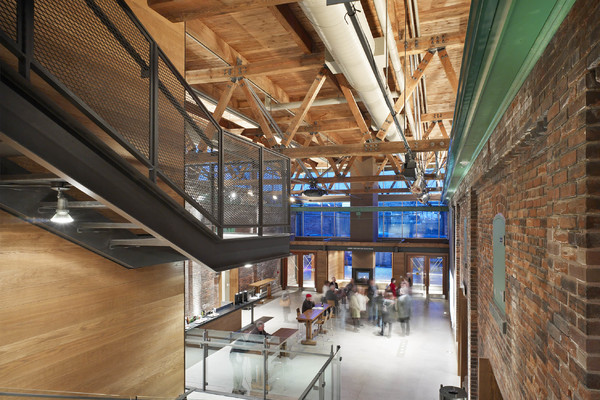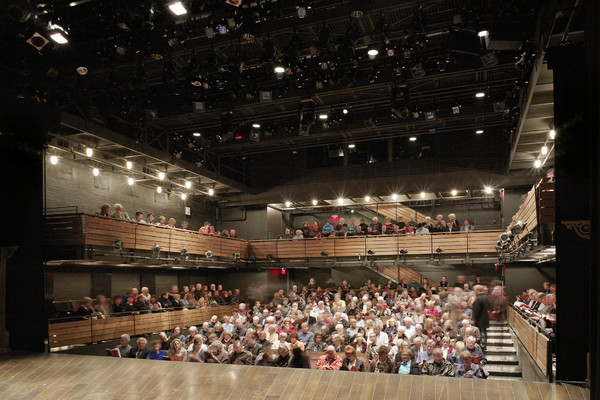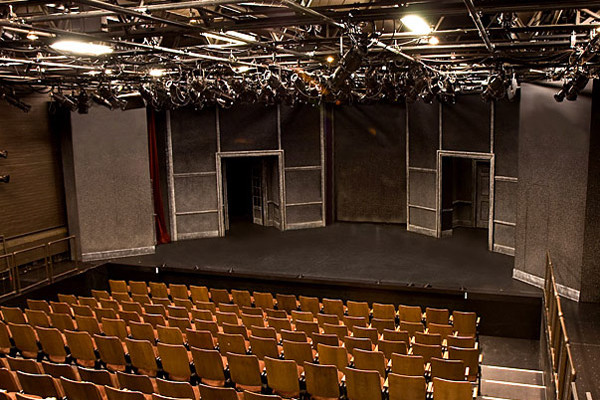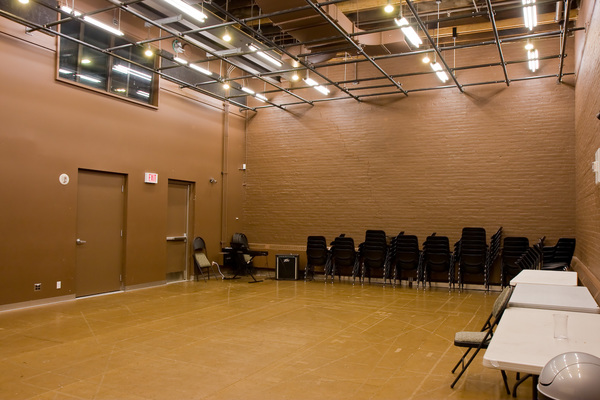 Sandra Faire and Ivan Fecan Atrium
Sandra Faire and Ivan Fecan Atrium
The Sandra Faire and Ivan Fecan Atrium:
This is the first room that you see when you enter our building. It is named for a prolific Canadian media producer and philanthropist couple: Ivan Fecan and his late wife, Sandra Faire. They have done a tremendous amount of work in Canadian television broadcasting and were generous donors to arts & culture. The space acts as a gathering place for actors, students, and the public, and as a formal reception area for private events like weddings, parties, and the opening nights of shows. It was created by enclosing the space between two existing tank houses with spans of Douglas fir timber and high windows. The brick walls were deliberately exposed and untreated to respect the history of the building, and original windows have been retained and painted in a heritage colour.
The Kevin and Roger Garland Cabaret:
Known mainly as “the Cabaret,” this space was named for two longtime Soulpepper donors: Roger Garland, who currently sits on Soulpepper’s Board of Directors’ chair advisory committee, and his wife, Kevin, who is a philanthropist and director of several important organizations in Toronto, including the Toronto Waterfront Revitalization Corporation and United Way of Greater Toronto. The Cabaret is a multifunctional space that can accommodate overflow from the atrium during extremely busy performance periods. It is also used as a classroom and dance studio for George Brown Theatre School students, a performance space, and an elegant reception area. It seats about 80 people and is technically equipped to facilitate a range of performances. It is often used for post-show Education & Outreach events as well as dinners hosted for the benefit of our many generous donors.
The Marilyn and Charles Baillie Theatre:
Simply referred to as the Baillie, this theatre is named after another two prominent donors: Charles Baillie, who currently serves on the board of several companies, including Telus and the Canadian National Railway Company; and his wife, Marilyn. It is the largest theatre in the Young Centre. The theatre seats a different amount of audience members depending on how it is arranged: as a thrust stage (260 audience members), an arena stage (302 audience members), or as a classic proscenium (385 audience members). With the opening of Soulpepper’s 2006 production of King Lear, the Baillie Theatre debuted as Toronto’s first thrust stage. The space is fully wired for state-of-the-art technology and the ceiling is a catwalk structure that allows full access to the lighting grid. In its first five months, the Baillie housed traditional live theatre, multiple press events, an opera, a jazz festival, and a full-scale musical.
The Michael Young Theatre:
This theatre is our second largest space and named for the Michael Young Family Foundation, who donated the generous $3 million to begin the initial development of the Young Centre. They later went on to make another contribution to sponsor a specific space within the building: the Michael Young Theatre. This theatre is a true black box, capable of being set up in an almost unlimited number of configurations. At its maximum capacity, it can seat 207 patrons. It also housed the Young Centre’s very first performance: The Emperor’s New Clothes, by Canada’s own famed dance company, Ballet Jörgen, in January of 2006.
The Tank House Theatre:
The Tank House theatre, our smallest theatre, is so named because of the old Tank Houses that surround the building. It is an intimate, flexible theatre space with a control booth and lighting grid and can seat as many as one-hundred patrons. The Tank House, along with our other performance spaces, were originally painted a deep chocolate brown instead of the popular matte black which came into fashion in the 1970s when black box theatres were all the rage. Designers felt that brown was warmer and matched better with the 19th-century exposed brick. In 2007, the Tank House was painted black for a production, and it was decided the space would remain the more traditional shade from then on.
 Sandra Faire and Ivan Fecan Atrium
Sandra Faire and Ivan Fecan Atrium
 Marilyn & Charles Baillie Theatre
Marilyn & Charles Baillie Theatre
 Michael Young Theatre
Michael Young Theatre
 Studio 2
Studio 2
